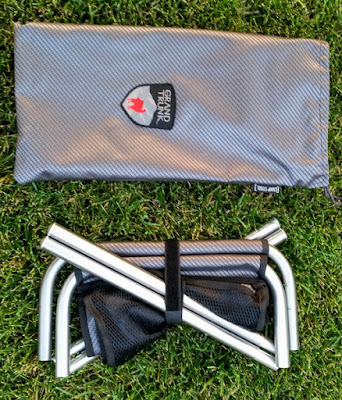The Grand Trunk camping stool is lightweight and collapsible making it ideal for hikers, campers, and motorcyclists. The stool is small enough to pack on your bike and big enough for a seat when needed. The seat area is 12.6 inches by 10.6 inches and sits at a height of 14.5 inches.
The stool breaks down by removing the legs which are attached to the seat frame with shock cord, just like a tent. This also makes it fast and easy to set up. No tools are required to set up or break down the stool and when broken down, the entire stool goes into a storage bag. This compact package can fit in your saddlebag or backpack.
For motorcycle traveling the stool easily fits inside my Pelican 1450 case with some room to spare. It weighs just 22 ounces, making it lighter and easier to carry than a full sized folding chair on your bike.
I've used this stool on several moto-camping trips and I like that it's small, lightweight, easy to set up and take down. The four legs make it more stable and comfortable than those three legged stools. It's also less expensive than similar chairs on the market.
The nylon seat is tough enough for outdoors use and the mesh storage area under the seat is a convenient place to put glasses, a flashlight or anything else you want to keep close. The entire seat has a weight capacity of 250 pounds.
For motorcycle traveling the stool easily fits inside my Pelican 1450 case with some room to spare. It weighs just 22 ounces, making it lighter and easier to carry than a full sized folding chair on your bike.
I've used this stool on several moto-camping trips and I like that it's small, lightweight, easy to set up and take down. The four legs make it more stable and comfortable than those three legged stools. It's also less expensive than similar chairs on the market.
Most importantly, it keeps my butt out of the dirt and pine needles during my morning coffee and that makes for a good morning in the forest.













